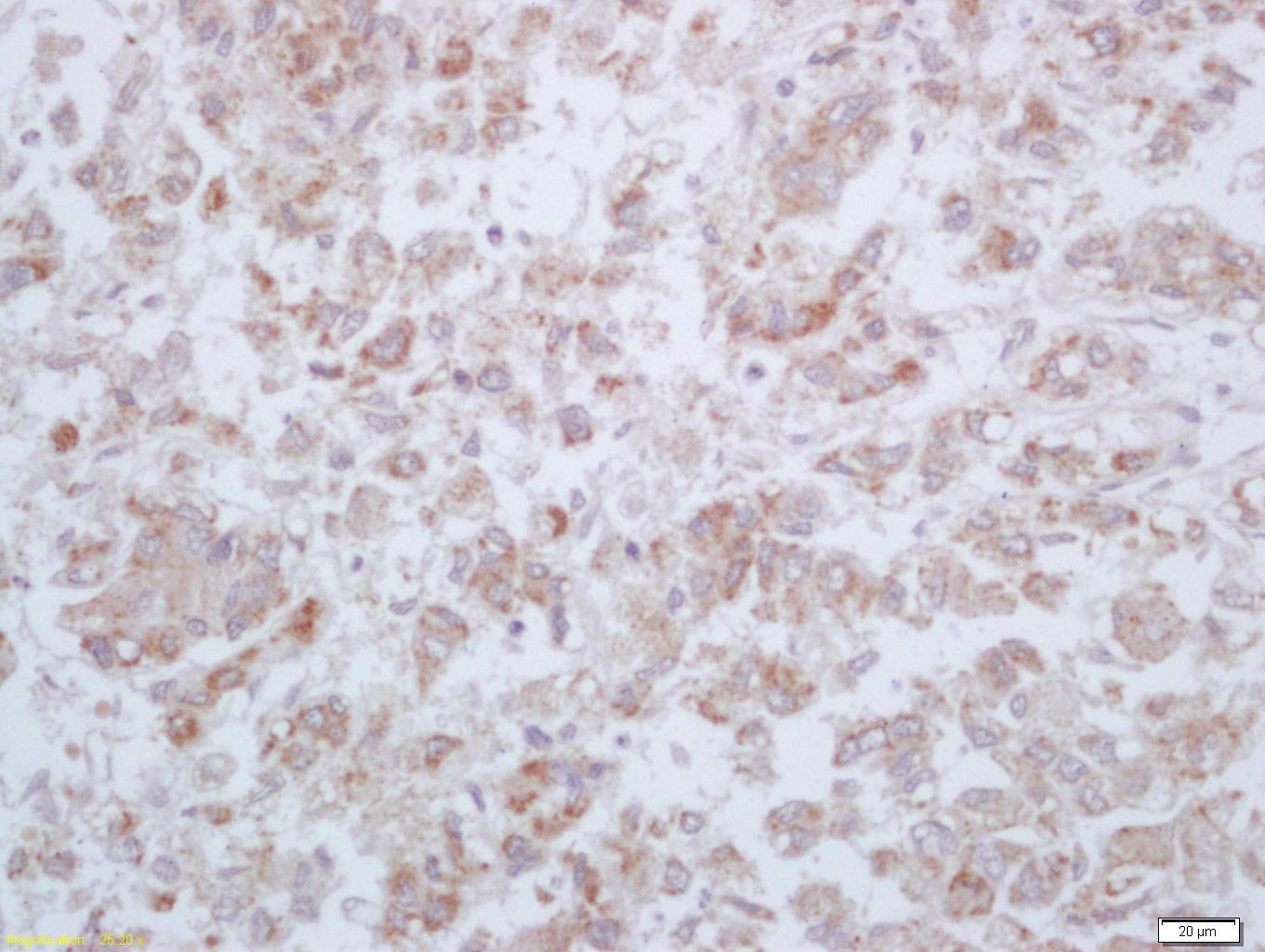MX1 + MX2 Rabbit pAb
MX1 + MX2 Rabbit pAb
- 产品详情
- 实验流程
- 背景知识
Application
| IHC-P, IHC-F, IF |
|---|---|
| Primary Accession | P20592 |
| Other Accession | P20592 |
| Reactivity | Rat, Pig, Dog, Horse |
| Host | Rabbit |
| Clonality | Polyclonal |
| Calculated MW | 82089 Da |
| Physical State | Liquid |
| Immunogen | KLH conjugated synthetic peptide derived from human IFI78/MX1 |
| Epitope Specificity | 301-400/662 |
| Isotype | IgG |
| Purity | affinity purified by Protein A |
| Buffer | 0.01M TBS (pH7.4) with 1% BSA, 0.02% Proclin300 and 50% Glycerol. |
| SUBCELLULAR LOCATION | Cytoplasm. |
| SIMILARITY | Belongs to the dynamin family.Contains 1 GED domain. |
| SUBUNIT | Interacts with TRPC1, TRPC3, TRPC4, TRPC5, TRPC6 and TRPC7. |
| Important Note | This product as supplied is intended for research use only, not for use in human, therapeutic or diagnostic applications. |
| Background Descriptions | Members of the Dynamin family include GTPase, microtubule-associated proteins that are involved in cellular trafficking, including microtubule bundling and endocytosis. Mx1, also known as MxA, an interferon (IFN)-induced protein, acquires a high degree of resistance to influenza A virus and the rhabdo-virus vesicular stomatitis virus (VSV), which suggests that Mx1 plays an active role against influenza virus and the rhabdovirus VSV. Mx1 is a cytoplasmic protein that is 63% identical to the Mx2 protein, which lacks antiviral activity. Mx2 is also known as MxB and is localized at the cytoplasmic face of nuclear pores. Mx2 expression is not interferon-dependent and this protein is thought to regulate the efficiency and/or kinetics of nuclear import, a function which may have been usurped by its antiviral relatives. |
| Gene ID | 4600 |
|---|---|
| Other Names | Interferon-induced GTP-binding protein Mx2, Interferon-regulated resistance GTP-binding protein MxB, Myxovirus resistance protein 2, p78-related protein, MX2 |
| Dilution | IHC-P=1:100-500,IHC-F=1:100-500,IF=1:100-500 |
| Storage | Store at -20 °C for one year. Avoid repeated freeze/thaw cycles. When reconstituted in sterile pH 7.4 0.01M PBS or diluent of antibody the antibody is stable for at least two weeks at 2-4 °C. |
| Name | MX2 |
|---|---|
| Function | Interferon-induced dynamin-like GTPase with potent antiviral activity against human immunodeficiency virus type 1 (HIV-1). Acts by targeting the viral capsid and affects the nuclear uptake and/or stability of the HIV-1 replication complex and the subsequent chromosomal integration of the proviral DNA. Exhibits antiviral activity also against simian immunodeficiency virus (SIV-mnd). May play a role in regulating nucleocytoplasmic transport and cell-cycle progression. |
| Cellular Location | Cytoplasm. Nucleus. Nucleus, nuclear pore complex. Note=Localization to nuclear pores requires GTP-binding |
For Research Use Only. Not For Use In Diagnostic Procedures.
Provided below are standard protocols that you may find useful for product applications.
BACKGROUND
Members of the Dynamin family include GTPase, microtubule-associated proteins that are involved in cellular trafficking, including microtubule bundling and endocytosis. Mx1, also known as MxA, an interferon (IFN)-induced protein, acquires a high degree of resistance to influenza A virus and the rhabdo-virus vesicular stomatitis virus (VSV), which suggests that Mx1 plays an active role against influenza virus and the rhabdovirus VSV. Mx1 is a cytoplasmic protein that is 63% identical to the Mx2 protein, which lacks antiviral activity. Mx2 is also known as MxB and is localized at the cytoplasmic face of nuclear pores. Mx2 expression is not interferon-dependent and this protein is thought to regulate the efficiency and/or kinetics of nuclear import, a function which may have been usurped by its antiviral relatives.
REFERENCES
Aebi M.,et al.Mol. Cell. Biol. 9:5062-5072(1989).
Horisberger M.A.,et al.J. Virol. 64:1171-1181(1990).
Tazi-Ahnini R.,et al.Hum. Genet. 106:639-645(2000).
Ku C.C.,et al.Immunol. Cell Biol. 89:173-182(2011).
Ota T.,et al.Nat. Genet. 36:40-45(2004).
终于等到您。ABCEPTA(百远生物)抗体产品。
点击下方“我要评价 ”按钮提交您的反馈信息,您的反馈和评价是我们最宝贵的财富之一,
我们将在1-3个工作日内处理您的反馈信息。
如有疑问,联系:0512-88856768 tech-china@abcepta.com.























 癌症的基本特征包括细胞增殖、血管生成、迁移、凋亡逃避机制和细胞永生等。找到癌症发生过程中这些通路的关键标记物和对应的抗体用于检测至关重要。
癌症的基本特征包括细胞增殖、血管生成、迁移、凋亡逃避机制和细胞永生等。找到癌症发生过程中这些通路的关键标记物和对应的抗体用于检测至关重要。 为您推荐一个泛素化位点预测神器——泛素化分析工具,可以为您的蛋白的泛素化位点作出预测和评分。
为您推荐一个泛素化位点预测神器——泛素化分析工具,可以为您的蛋白的泛素化位点作出预测和评分。 细胞自噬受体图形绘图工具为你的蛋白的细胞受体结合位点作出预测和评分,识别结合到自噬通路中的蛋白是非常重要的,便于让我们理解自噬在正常生理、病理过程中的作用,如发育、细胞分化、神经退化性疾病、压力条件下、感染和癌症。
细胞自噬受体图形绘图工具为你的蛋白的细胞受体结合位点作出预测和评分,识别结合到自噬通路中的蛋白是非常重要的,便于让我们理解自噬在正常生理、病理过程中的作用,如发育、细胞分化、神经退化性疾病、压力条件下、感染和癌症。






